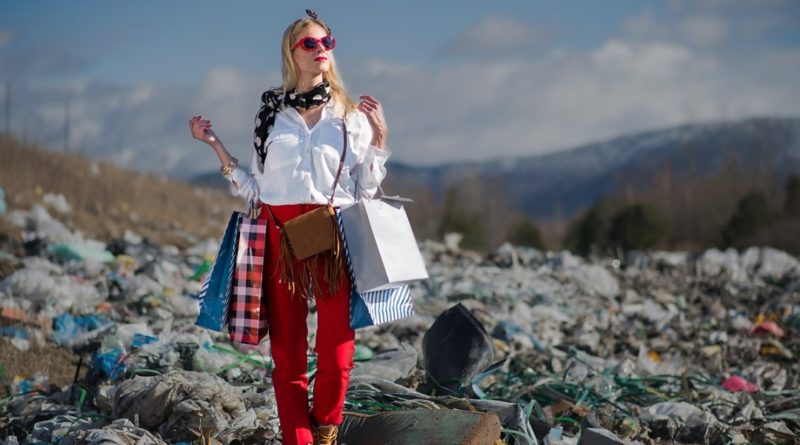Fast Fashion – A blog from CAS
A student from CAS class wanted to share this information about Fast Fashion, they wanted to remain anonymous.
Fast fashion and it’s problems
In recent years, the fast fashion industry has grown, giving buyers stylish items for a low price. While this phenomena has democratized fashion by allowing individuals of all socioeconomic backgrounds to access the newest trends, it also comes with an array of hidden problems that are frequently overlooked. Here, we will look at the various effects that fast fashion has on the environment, society, and the economy.
Environmental
- Massive waste generation
Fast fashion’s businesses thrive on new trends that constantly change with each week, encouraging consumers to frequently change their wardrobes. This has led to a staggering increase in textile waste. In the United States alone, an estimated 11 million tons of clothing end up in landfills each year. Many of these garments are made from synthetic fibers that take hundreds of years to decompose, contributing to long-term environmental pollution
- Water pollution
The production process for fast fashion products involves the extensive use of chemicals and dyes, which often find their way into rivers, seas ect. Textile dyeing is one of the largest polluters of clean water globally. This contamination affects marine life and the health of communities living near manufacturing hubs
- Carbon footprint
The fast fashion industry is responsible for a significant portion of global carbon emissions. The entire lifecycle of a garment—from production to disposal—relies heavily on fossil fuels. Fast fashion’s quick production cycles also demand energy-intensive manufacturing processes, exacerbating the industry’s carbon footprint.
Social Consequences
- Labor exploitation
Fast fashion companies sometimes outsource production to nations with looser labor rules in order to maintain cheap pricing. Poor working conditions, long hours, and little pay are commonplace for the women and children who work in these industries. The dangerous working conditions that many workers face to make cheap clothes are a huge risk . One example would be the 2013 Rana Plaza collapse in Bangladesh, which claimed the lives of over 1,100 textile workers.
- Health risks
Workers face major health hazards when exposed to dangerous chemicals used in the textile production process. In addition, the tainted air and water provide a threat to the residents residing close to these industries. Prolonged exposure to these contaminants can cause major health concerns such as skin ailments and respiratory disorders.
Viewer discretion is advised on this video: https://www.youtube.com/watch?v=LWvOlZ4hPU0
Economic factors
- Local economies
In many developing nations, local textile businesses have suffered due to the dominance of fast fashion. Local artistry is declining as a result of economic instability brought on by huge multinational companies’ low prices and quick production cycles, which are too good for small-scale manufacturers and traditional craftspeople.
- Consumer culture
Customers now have a throwaway mentality due to the low costs and steady availability of new trends. Clothes items are seen as disposable, which diminishes the labor and materials used in their creation. Long-term economic effects of this change include a decline in consumer items’ perceived quality and durability.
Sustainable alternatives
- Slow fashion movement
A more sustainable method has been suggested by the slow fashion movement in reaction to the detrimental effects of fast fashion. The focus on quality over quantity in this approach encourages buyers to spend more money on classic, well-made items that will last longer and require fewer replacements.
- Ethical brands practice
Nowadays, a lot of fashion brands are embracing ethical business methods, emphasizing fair pay, secure workplaces, and eco-friendly materials. Encouragement of these brands can lead to positive changes in the industry at large.
Conscious consumerism
Customers have a big say in what changes are made. People may lessen the need for fast fashion and its negative effects by choosing sustainable businesses, buying used goods, upcycling old clothing by DIY or local seam businesses and at last making thoughtful purchase selections.
While Fast fashion is accessible and reasonably priced, there are too many hidden problems associated with them to be ignored. Its perpetuation of social injustice, environmental damage, and economic instability highlights the pressing need for a change to more ethical and sustainable fashion methods. We can all work together to lessen the negative consequences of fast fashion and promote a more sustainable future for this industry by making educated decisions and supporting ethical companies.
Post featured photo is from: https://www.linkedin.com/




